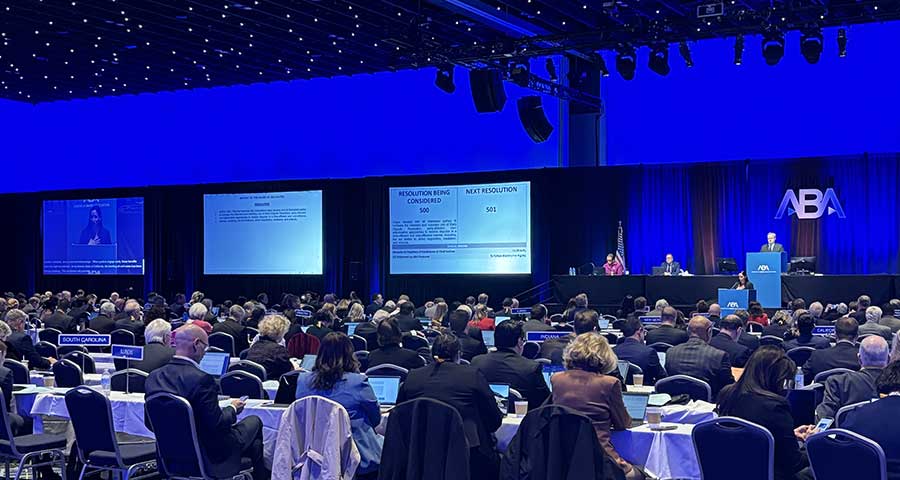
In an economy where focus is becoming more on cost control, both clients and law firms are looking for ways to create value-based or alternative fee agreements.
Traditionally, lawyers have charged clients based on an hourly billing arrangement where the lawyer charges an agreed upon hourly rate for the amount of time spent working on a client’s case. This model of billing has some obvious disadvantages, such as incentivizing inefficiency on the lawyer’s part – the longer a case goes on, the more money the law firm makes with an hourly billing model. Additionally, hourly billing can create an element of uncertainty for the client. When work is charged per hour, clients are not able to budget for the entirety of a case and may end up spending significantly more than they first anticipated.
Value-based fee agreements, on the other hand, allocate risks and align incentives in ways that best suit the client’s goals for a particular case or portfolio of work. Clients are then able to plan their finances more efficiently and avoid surprise when the final invoice arrives. With value-based fee agreements, the interest of the client and the law firm are aligned. Lawyers are encouraged to work efficiently to add as much value to the client’s case as they can. Properly structured and implemented, value-based billing structures should nurture a long-term partnership built on creating value for the clients.
Value-based fee arrangements have become increasingly popular in recent years. They consist of many different forms. One of the best features of the value-based fee agreement is its flexibility. For example, elements from one fee agreement can be mixed and combined with another to create a custom fee agreement that is best suited for the client’s case and the attorney’s law firm.
Value-based fee agreements are an important tool in the Early Dispute Resolution toolbox. In Early Dispute Resolution, the goal is to achieve an efficient, early, and fair outcome. Value-based fees can help accomplish those goals. Some of the more common forms of value-based fee agreements are outlined below:
- Fixed or Flat Fees
Overview: Client will pay an agreed upon fixed fee for the work over a specified period. The fixed fee is established based on a mutually agreed upon scope of work, and on shared projections of what the work should cost and the matter’s value to the client.
Client benefit: The client eliminates the risk of unpredictable legal costs due to expected or unexpected fluctuations in the time a lawyer needs to handle a matter or a group of matters.
Law firm benefit: The law firm has a greater incentive to manage the case and make strategic decisions that resolve the case efficiently.
Common Uses: For repetitive work, a fixed fee provides consistency in the cost. Fixed fees are easiest to use on matters with which both the client and law firm are already familiar, which involve common issues and a common life cycle, reducing variability in costs.
- Contingent Fees
Overview: Law firm receives an agreed upon percentage of the client’s recovery.
Client benefit: The client pays no up-front fees and are not faced with huge legal bills while their case is still ongoing. The client has the comfort of knowing that his attorney will be highly motivated to do everything in order to get the best result. There are no costs to client if he loses.
Law firm benefit: The attorney can serve clients and take potentially lucrative cases that the client may not otherwise be able to afford. It allows the attorney to move forward with subpoenas, depositions, or other actions that a client paying legal fees may wish to forgo. It potentially can provide a large recovery.
Common Uses: Personal injury cases and workers’ compensation cases. Typically used where the case presents clear liability and a means to collect a judgment or settlement.
- Reverse Contingent Fees
Overview: The fee is structured similarly to standard contingency fees used for recovery work, except that the contingent fee is based on a percentage of the amount saved for the client in the matter versus a recovery amount. The client and law firm must agree in advance on the “fair value” of the exposure the client faces if it loses the case, as well as the costs of full litigation. The reverse contingency fee is set as a percentage of the difference between the value of the estimated exposure and the amount, if any, the client ultimately pays in damages or settlement, plus avoided legal costs. A reverse contingency fee can be used alone or in conjunction with either discounted hourly rates or a fixed fee.
Client benefit: The reverse contingency shifts some of the downside risk of the litigation to the law firm, which can profit from the matter only if it obtains an excellent result for the client. Thus, the reverse contingency aligns the client’s and law firm’s incentives in defense cases in ways that are not possible with standard hourly billing. A reverse contingency allows the client to demonstrate to the law firm the impact of the litigation, both in terms of exposure and legal costs, to the client’s business. This, in turn, can encourage a stronger partnership between the law firm and client, and more effective management of the litigation by the law firm, because the law firm better understands the litigation in its broader business context.
Law firm benefit: The law firm has stronger financial incentives to achieve the best possible result for the client, taking into account both the exposure on the claims and the costs of defense. The law firm has the incentive to staff and pursue the litigation in a more streamlined and targeted manner, because the law firm’s margins increase the more it minimizes costs while still achieving a successful result. The law firm will be less motivated to litigate for litigation’s sake, and more motivated to pursue settlement or non-traditional litigation strategies that minimize impact of litigation on the client’s bottom line.
- Success Fees or Performance Incentives
Overview: A discretionary fee paid to the law firm if the law firm achieves a favorable predetermined result. Successes may include an early resolution at or below a particular total cost, achieving a desired schedule, narrowing or avoiding discovery, winning a dispositive motion, or reducing overall economic cost of the case below a certain agreed upon threshold.
Client benefit: Reduces case expense where the law firm is unable to deliver a successful outcome. At the outset, focuses on defining what the client’s objectives – business and legal – are for the matter, so there are early, clear metrics against which the law firm’s performance is measured. Forces early case/matter assessment; helps manage expectations and encourages candid advice. Higher legal spend occurs only where the law firm delivers measurable value.
Law firm benefit: Provides specific rewards for successful outcomes to align law firm incentives with the client’s pre-determined metrics of success. The law firm can realize premium returns. May be combined with almost any other type of alternative fee agreement. A law firm that engages in Early Dispute Resolution and resolves a case early can earn a lot more money for its time with a performance bonus than it would earn engaging in traditional hourly litigation.
Common Uses: Where the matter involves complex issues and uncertain levels of investment, such that front-end collaboration on client goals sharply focuses the effort. Where creativity and quality of counsel will be a key component to achieving success, as defined. Often used in litigation and paid if the law firm wins the lawsuit or reaches a favorable result.
- Performance-Based Holdbacks
Overview: A discretionary fee paid to the law firm based on the in-house counsel’s review of the legal services provided. A holdback is not a stand-alone fee structure, but an overlay on traditional hourly billing or fixed fees. In the beginning, the client and the law firm agree on a set of performance metrics against which the law firm will be measured. Often these are law firm service-related, rather than (or in addition to) outcome related. A percentage of the fee is “held back” by the client (or by the firm). The law firm and the client meet at regular intervals to assess the law firm’s performance against the metrics and the holdback amount is paid to the law firm based on this evaluation. A holdback can be used in connection with a specific matter or for part or all of the client’s relationship with the law firm. A holdback is broader and more flexible than a contingency fee or a success fee. The holdback can be assessed on the basis of a successful outcome, efficient resolution, effective use of cost-saving measures, contribution toward client’s business objectives, service excellence, or any combination of these or other criteria.
Client benefit: Holdbacks encourage counsel to share in the downside risks of a matter, with the potential to participate in the upside. The client, in turn, is better protected against cost overruns and incurring large costs for unsuccessful outcome. The holdback allows the client to demand that the higher-rate firm prove that its higher rates are justified by the expertise and experience it offers. Holdbacks allow the client to hold the law firm accountable on a regular basis through periodic reviews. Holdbacks also encourage the client to re-evaluate the ways in which law firms create value for the business and determine the best ways for measuring that value.
Law firm benefit: A holdback creates a penalty for the perceived drawbacks of the hourly billing model, such as overstaffing or overworking certain tasks. A holdback creates incentives similar to a success fee, but offers the law firm more downside protection and is thus more adaptable to the economic structure of large law firms. The attorneys managing the matter are encouraged to actively manage the matter in ways that most align with the client’s broader objectives. The attorneys managing the matter are encouraged to actively understand the client’s business and how their work fits with the client’s larger business objectives. When used across a portfolio of work, holdbacks encourage the firm to develop a stronger overall partnership with the client than under the traditional hourly billing model. Ultimately, holdbacks are intended to focus the law firm on developing highly satisfied clients, who are willing to acknowledge when value has been created by counsel.
Common Uses: To incentivize the law firm to deliver excellent service throughout the transaction. Typically, this type of alternative fee arrangement is coupled with a flat fee in a transaction where the law firm’s fees are guaranteed from the outset. Holdbacks require commitment on the part of the client and the law firm to an ongoing dialogue regarding the law firm’s performance and whether it is meeting the client’s objectives. This commitment can be a substantial investment in time, so holdbacks are better suited for large matters, or portfolios of matters, that justify this investment. Holdbacks work best where the client and the law firm have an ongoing relationship, making it easier for the client and law firm to define mutually-acceptable performance criteria, and for the law firm to trust the client to be fair. Building a bonus into the holdback, (e.g., 15% holdback, with a potential 5% bonus over and above the holdback amount if certain criteria are met) can further encourage the law firm to commit to the process of defining and evaluating performance and value.




